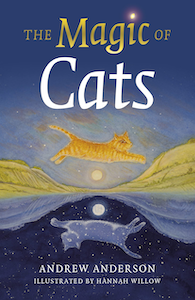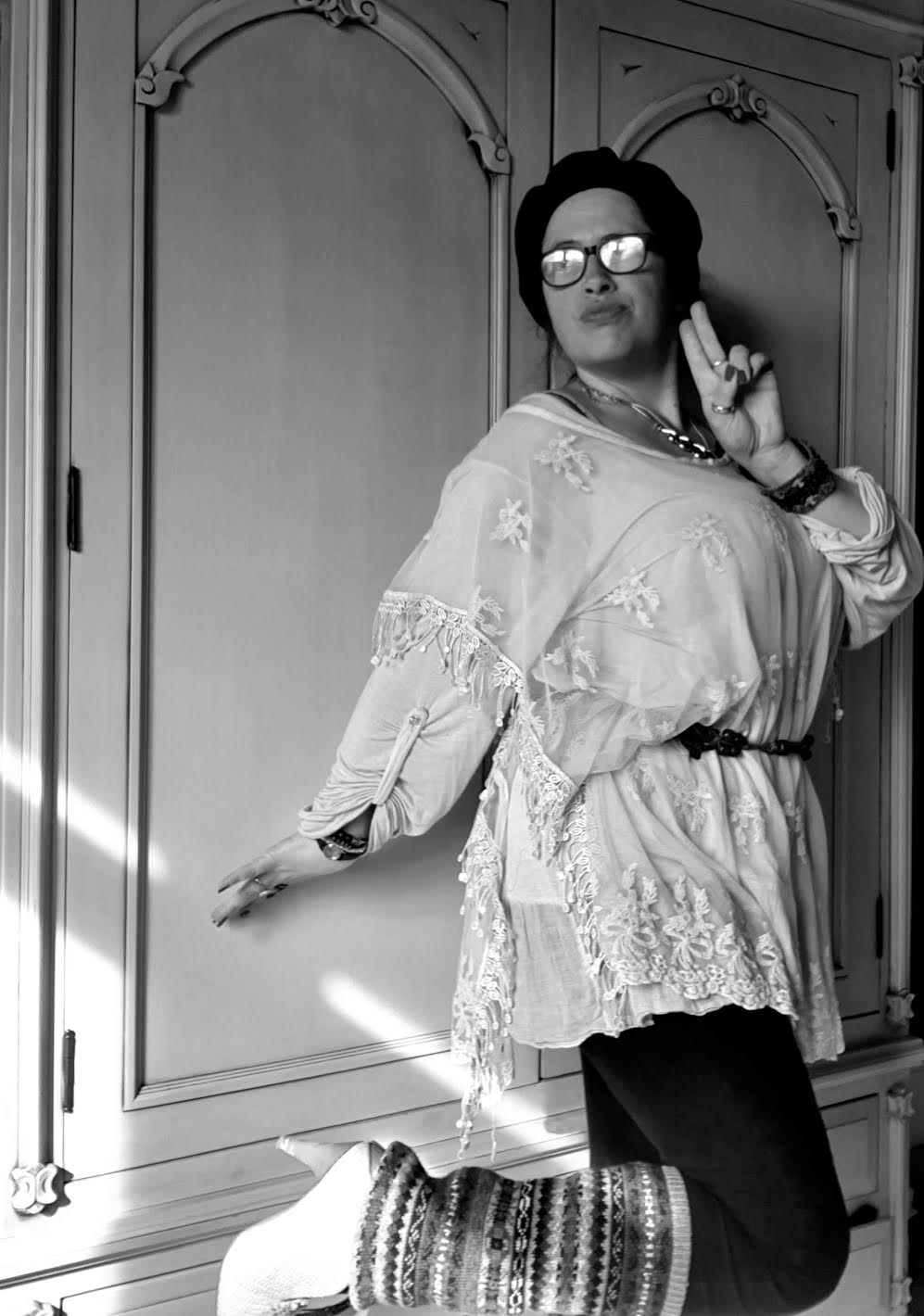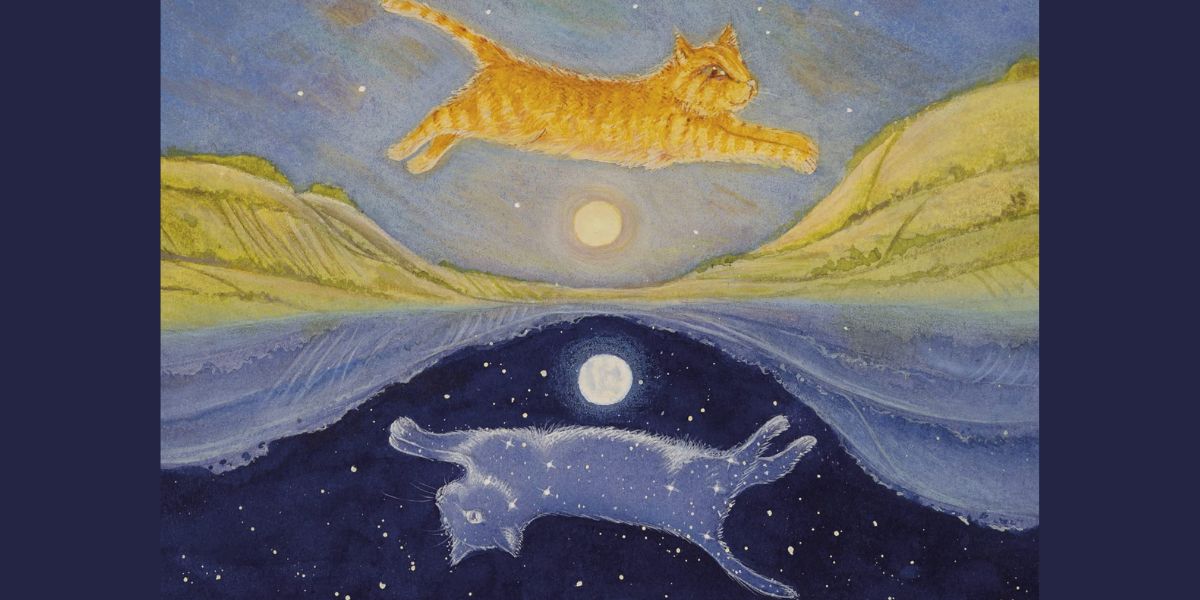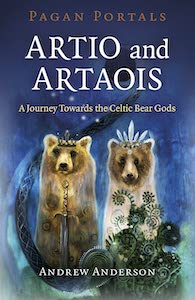
The Magic of Cats, by Andrew Anderson
Moon Books, 1803410663, 120 pages, May 2023
Just when you think you know everything about cats, Andrew Anderson comes along and opens your eyes to a whole new world–a world of stark contrasts between the cat of the night–with his lunar connection and the cat of the day with her built in solar panels. Both of whom are similar in so many ways but love to remind us of their differences.
The Magic of Cats takes us way back, all the way to the Chinese creation myth that cats were sent by the gods to protect and look after humans, a task which they ultimately failed at, and instead became our silent, judging companions.
As a lover of cats and a human who has been fortunate enough to be given the honor of living with a cat, I instantly knew I had to read this book. My cat, who I refer to as my familiar, is a definitive cat of the night. She’s like a little ninja, becoming a shadow when needed. Stalking her prey with her murder mittens, then flouncing back home ready for belly rubs, head bumps, and snoot boops.
We try our best to turn these kitties into snuggly, fluffy balls of floof, and although they tolerate it to an extent, they’re inevitably the rulers of any roost, as Andrew makes quite clear. Cats have prowled this earth for millenia, with us mere humans at their beck and call, and that’s not about to change any time soon.
I’d like to take this opportunity to offer a trigger warning, although Andrew doesn’t dwell on the harmful behaviour that cats have endured from humans in the past, he doest cover it. He doesn’t go into great detail, but if you’d prefer to not read about it, maybe skip past pages 32 and 33.
Anderson has split the book into two sections, each with their own chapters: “The Cat of the Night” and “The Cat of the Day”.
The witches among you will most likely be familiar with the cat of the night. They are sneaky and slinky and receive their energies from the moon. These are the cats who humans have sadly feared at times, when actually they should be celebrating their feline ways. If the Chinese creation myth is to be believed, then the cats of the world will be all seeing and all knowing, something which I’m surprised wasn’t taken into account in the historical treatment of cats.
And then on the other hand we have the cat of the day. The one who worships and soaks up the sun, he’s cunning and clever and knows exactly how to win your heart.
It is apparent, aside from Anderson telling us in his introduction, that he adores cats. They are and always have been a huge part of his world.
So much so that he was inspired to write the poem “The Cat of the Night and The Cat of the Day (A story for kittens of all ages)”. This narrative poem is a beautiful representation of how sacred we view cats to be (and with good reason). Anderson’s poem is accompanied by the gorgeous illustrations created by artist, Hannah Willow, and the beauty that she brings out of his words is ‘purr-fect.’
Cats are ever present throughout our history, whether feared or revered. We live and love alongside our feline friends. Never really knowing what they’re thinking, but hoping that deep down they feel something for us. And from reading The Magic of Cats, Anderson gives me the confidence that on some level they do.
Nevertheless, whether it’s reciprocated or not, we always invite them into our lives, as we’re all fully aware of that precious feeling we get when, just for a fleeting moment, a cat makes us believe that we are noticed in its world.
Then you realize all the cat wants is your chicken sandwich, and he or she may allow you to give them a head scritch, but only for precisely 4.5 seconds. Because you, measly human, are not worthy of anything else.
The Magic of Cats is a wonderful way to find a deeper connection to your furry freeloading roommate. And also, to dip into the history of cats of the world, how they’re represented in religion and where they feature in myth and legend.
Anderson has encapsulated these magnificent creatures in his powerful poem, of which he says:
“…imagines a story told by a mother cat to her kittens, explaining how the world was created and why we alternate between periods of light and dark.”1
It really cements the connection we can have with our cats, the magic we can share. We all have two sides to us, and I believe we can all find shared similarities in the cat of the night and the cat of the day when we look inside.

Kate Hames is, in no particular order, a writer, a witch, and a performer. She has a Bachelor of Arts Degree, a Certificate in Natural Sciences, and loves to travel and explore. When she’s not harassing the cat, she can be found with a camera in hand, hiking a hill or eating. Find her on Insta @madeahames or FB @KateHames



